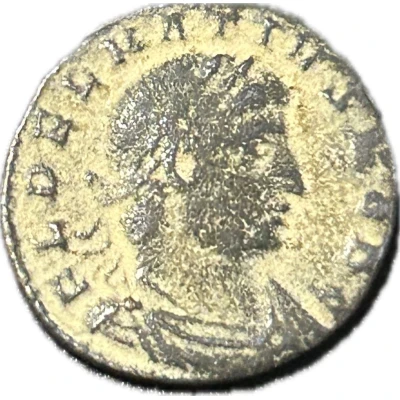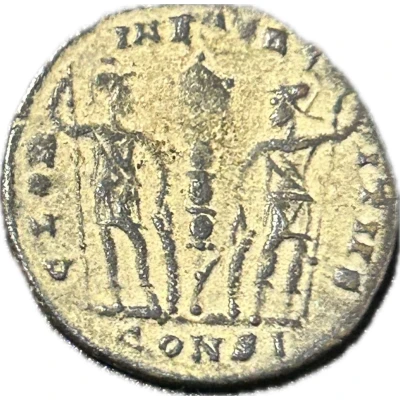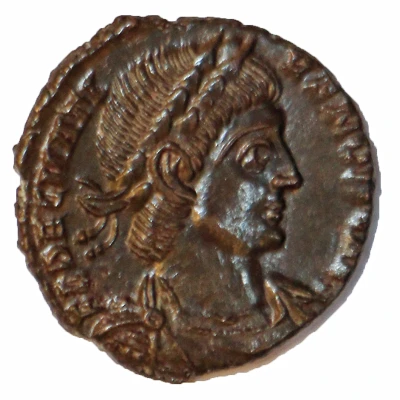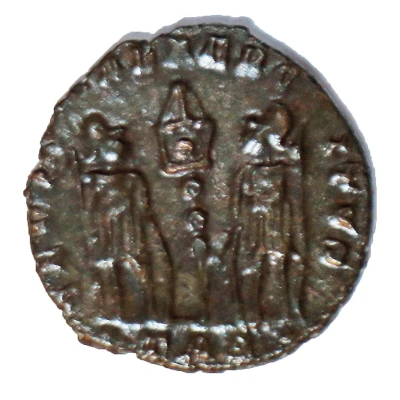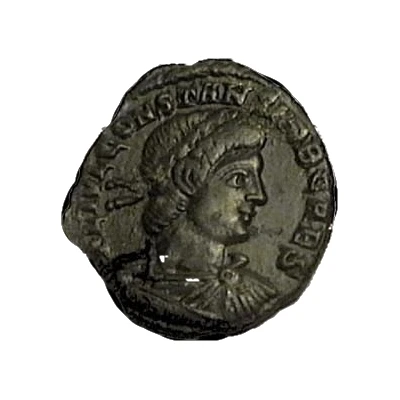
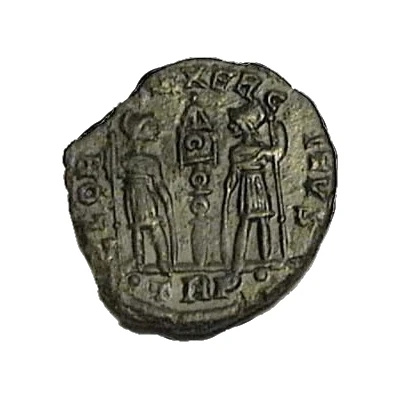

© SStefanov
Nummus - Constans I GLORIA EXERCITVS; Treveri
| Bronze | 1.43 g | 14.74 mm |
| Issuer | Rome › Roman Empire (27 BC - 395 AD) |
|---|---|
| Emperor | Constantine I (Flavius Valerius Constantinus) (306-337) |
| Type | Standard circulation coin |
| Years | 335-337 |
| Value | Nummus (1⁄7200) |
| Currency | Solidus, Reform of Constantine (AD 310/324 – 395) |
| Composition | Bronze |
| Weight | 1.43 g |
| Diameter | 14.74 mm |
| Shape | Round (irregular) |
| Technique | Hammered |
| Orientation | Variable alignment ↺ |
| Demonetized | Yes |
| Updated | 2024-10-05 |
| Numista | N#237626 |
|---|---|
| Rarity index | 90% |
Reverse
Two helmeted soldiers facing each other, each holding a spear with outer hand and leaning on shield with inner hand; between them, a standard.
Trier mintmark and officina between dots in exergue.
Script: Latin
Lettering: GLOR-IA EXERC-ITVS
Translation: To the Glory of the Army.
Edge
Plain
Interesting fact
One interesting fact about the Nummus - Constans I coin is that it features the first Christian symbol, the Chi-Rho, on its reverse side. The Chi-Rho is a combination of the Greek letters chi (Χ) and rho (Ρ), which represent the first two letters of the Greek word for Christ, Χριστός (Christos). This symbol was used by early Christians to secretly identify themselves and mark their places of worship, and its inclusion on the coin suggests that Christianity was already gaining popularity in the Roman Empire during the reign of Constans I (335-337 AD).
